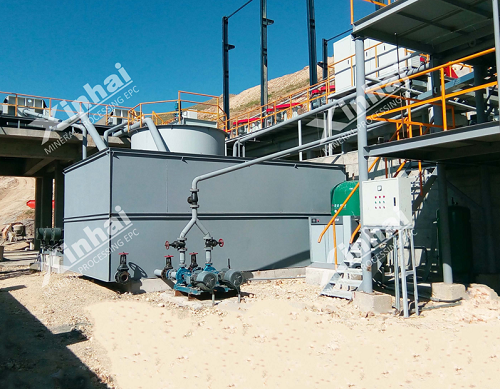Copper sulfide is the main source of copper production. The three main types of copper sulfide deposits are high-grade massive, disseminated copper porphyries and copper-bearing sandstones. Unlike copper sulfide deposits presented as massive ores, copper porphyry deposits only contain 5-10% of the ore minerals, mainly represented by chalcopyrite, pyrite, bornite, ferruginite, molybdenite, etc. These minerals are distributed throughout the rock in the form of individual grains—"porphyry" nodules and veinlets. Common grades for this polymetallic ore type are 0.3-0.6% copper, 0.1-0.2% zinc and 0.1-0.01% molybdenum.
Porphyry ores have the characteristics of close symbiosis of sulfide minerals, and sulfide minerals of different sizes are prone to appear. Based on this material composition, such ores will be processed using bulk sulfide flotation and further regrinding and cleaning steps. Pyrite usually occurs with copper sulfide, while pyrrhotite occurs less frequently. The most commonly encountered nonmetallic minerals are quartz, silicates, sericite, and barite.

All copper sulfides are treated by flotation using xanthate at 6-12 pH. When the pH is low, it is better to use an Aeroflot type reagent instead of xanthate. If molybdenum flotation is required to separate it from copper sulfide, the pH value should not exceed 11 to suppress pyrite, and lime and a small amount of cyanide should be added to the molybdenum flotation circuit, and soluble silica should be used to suppress it. Gangue minerals.
The following methods can be used to recover molybdenum from bulk copper-molybdenum concentrates:
• Treatment of copper-molybdenum concentrate with sodium sulfide. In this case, copper sulfide and other sulfides are suppressed and molybdenite can be recovered by flotation with hydrocarbon collectors.
• Oxidative cooking with lime (copper-molybdenum concentrate). In this case, chalcopyrite and pyrite lose their adsorption surface, oxidize and adsorb inhibited calcium ions. Concentration is carried out to remove excess lime, followed by molybdenite flotation with multiple cleaning stages and the addition of sodium sulfide at higher temperatures.
The number of flotation stages in the copper and molybdenum circuits depends on the content of the respective materials in the feed and their grade in the final product.
After concentration, filtration and drying, the concentrate is transported to the smelter for further processing
© 2021 Yantai KZ Mining Processing Technology & Equipment Inc.